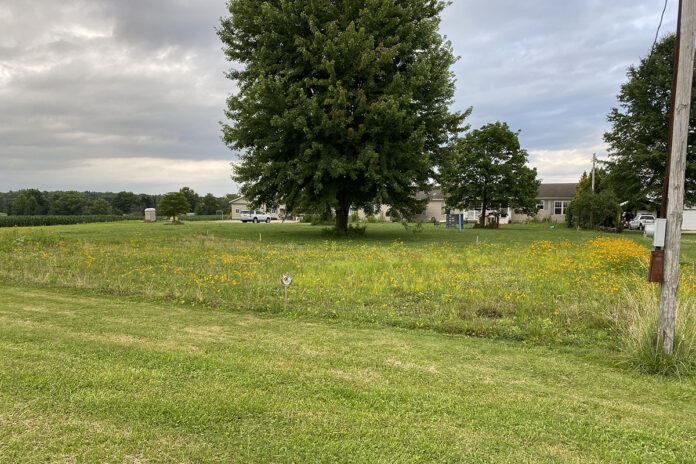What are pollinators?
They are bees, moths, butterflies, beetles, birds, and bats that move pollen from flower to flower.
Why the increasing interest and popularity of pollinator gardens and meadows in recent years?
Over the past 30-plus years, large numbers of pollinators have died throughout the U.S. due to loss of habitat, invasive species and diseases, pesticides and changing climate. Numerous species of native bees, butterflies and moths are either extremely rare or have become extinct.
Without pollinators, we wouldn’t have the wide variety of fruits, vegetables, chocolate and nuts that we enjoy eating. The cost of foods produced from pollinator-dependent plants would increase with a decrease in the number of pollinators. Pollinators are responsible for one in every three bites of food we consume and they increase U.S. crop values by more than $15 billion annually. That is big business!
What is Mahoning Soil & Water Conservation District doing to help pollinators thrive?
Well, several things. In partnership with the Rotary Club of Youngstown, the district is a founding member of Operation Pollination here in the Mahoning Valley with the goal to collaboratively and strategically protect and enhance pollinator species and their habitat on public and private lands.
We recently worked with the Ohio Department of Natural Resources Division of Forestry and Pheasants Forever on an inventory and evaluation site visit at a local township park with the hope to assist the park with conservation practices, including establishing pollinator habitat and weed control. The district has also worked with Boardman Glenwood Junior High School to advise students and teachers on the installation and maintenance of pollinator and rain gardens on the school’s campus.
This spring, the district will be planting demonstration gardens to determine the best plants for different types and sizes of pollinator gardens in Mahoning County. We will be offering public programs on planting and maintaining pollinator gardens using the district’s demonstration gardens. Stay tuned for the dates and times of these programs.
The Ohio Federation of Soil and Water Conservation Districts collaborates with the Ohio Pollinator Habitat Initiative to get the word out about the decline of the monarch butterfly and the need for more monarch habitats. Mahoning SWCD is proud to be a part of this collaborative effort.
The Ohio Pollinator Habitat Initiative is a partnership made up of many agencies, nonprofits and businesses working together to improve and create pollinator habitats and raise awareness about pollinators in Ohio. The initiative began in 2015 as a grassroots effort to inform citizens, landowners, farmers and government agencies about the importance of pollinators and the habitat they need to survive.
What you can do
What can you do to help pollinators thrive? You can help by increasing pollinator habitat by planting a pollinator garden or meadow on your property with native plants and avoid spraying the garden or meadow with pesticides and herbicides. Homeowners need to remember that municipalities have ordinances for tall grass and/or weeds that may place restrictions on the type and size of pollinator meadows or gardens you’re allowed to plant at your home.
What else can you do in to help our pollinators?
Take part in your local soil and water conservation district’s milkweed collection by picking and donating milkweed pods to your local SWCD. Every year we encourage Mahoning County residents to harvest milkweed seed pods as part of this statewide collaborative effort through OPHI to establish habitats for the rapidly declining monarch butterfly.
The Mahoning SWCD office and SWCD offices across the state are collecting the pods now through Oct. 30. This annual milkweed seed collection effort is a great opportunity to help reverse the decline in the monarch population by providing a food source and a resting and nesting place for them. We truly believe we’ve seen an increase in the monarch species since this program began.
Here are some tips for picking and storing milkweed seed pods, as well as instructions for drop-off:
- Pods must be dry, gray or brown in color to be picked.
- Store the pods in paper bags; plastic bags collect unwanted moisture;
- Put the date and county collected on the bag when you turn them in;
- Keep pods in a cool, dry area until you can deliver them to your local SWCD office.
- Contact your local office for details about how and when to drop off pods. In early September, milkweed seed pods will be maturing to the point where they can be harvested. The key point is the seeds inside should be brown before harvesting. NOT GREEN!
For more information or questions about pollinator gardens and how you can help our pollinators, contact our office at 330-740-7995 or reach out to your local SWCD.













